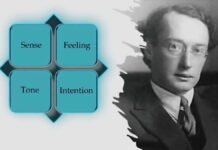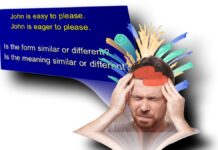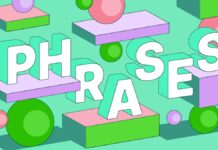Structuralism, primarily associated with linguist Ferdinand de Saussure, is a theoretical approach that seeks to understand human culture by identifying structures that underlie all social phenomena. It emerged in the early 20th century and was particularly influential in the mid-20th century. Structuralism posits that language, culture, and even human thought are governed by structures that function like a system of signs. This system can be broken down into basic elements and relationships. Structuralists aim to understand phenomena by examining their underlying structures and systems. Over time, structuralism has been expanded and critiqued, giving rise to post-structuralism and other theoretical developments.
Langue and Parole
Saussure distinguished between langue (the underlying system of language) and parole (individual speech acts).
Langue
Langue refers to the structure, rules, and conventions shared by a community, making communication possible. It’s the abstract, social dimension of language. It represents the deep structure that speakers of a language inherently know and follow, even if they aren’t conscious of the rules.
Parole
Parole refers to actual spoken or written language in use—how individuals put the system of langue into practice. It’s concrete and variable, reflecting individual speech acts or sentences. While langue is abstract and stable, parole shows variation, creativity, and flexibility in everyday communication.
Together, langue and parole form a complementary relationship where langue provides the structural basis for meaningful communication, and parole demonstrates the application of that structure.
Sign, Signifier, and Signified
Sign
In Saussurean linguistics, a sign is the fundamental unit of meaning. It consists of two components: the signifier and the signified. The sign represents the whole concept of linguistic meaning in structuralism. It’s the link between sound (or written symbol) and concept.
Signifier
The signifier is the form of the sign, such as a word’s sound or written representation. It’s the physical aspect of the sign. The signifier is crucial because it is the means through which meaning is conveyed in language.
E.g., The word “tree” as a collection of letters (t-r-e-e) or as a spoken sound.
Signified
The signified is the concept or idea that the signifier refers to. It’s the mental image or meaning that the signifier invokes. It reflects the abstract meaning or content in the relationship between the sign and the real world.
E.g., When hearing the word “tree,” the signified is the mental concept of a tree (not the actual physical tree itself).
Together, the signifier and signified form a sign, which conveys meaning, and this relationship is arbitrary—meaning there’s no inherent link between the signifier and the signified.
Binary Opposites
Binary opposition refers to pairs of contrasting terms or ideas that help define each other within a system of thought. E.g., hot/cold, good/evil, male/female. Structuralism argues that much of human meaning-making occurs through binary oppositions. These opposites structure our understanding of the world.
E.g., In literature, many narratives are built around the opposition between hero and villain, or nature and culture.
Claude Lévi-Strauss, a key figure in structuralism, used binary oppositions to analyse myths and social structures, suggesting that these opposites underpin human culture.
Synchronic and Diachronic Analysis
Synchronic
A synchronic approach examines language (or any cultural system) at a specific point in time, without concern for historical development. Saussure focused on the synchronic study of language, which allows for the understanding of the structural relationships between elements at a given moment.
E.g., Analysing the English language as it exists today, without looking at its historical evolution.
Diachronic
A diachronic approach looks at language (or culture) across time, tracing historical developments and changes. While Saussure emphasised synchronic analysis, diachronic study is essential for understanding how languages and cultural systems evolve.
E.g., Tracing the history of the English language from Old English to Modern English.
Syntagmatic and Paradigmatic Relations
Syntagmatic
Syntagmatic relations are the linear relationships between signs in a sequence, such as words in a sentence. It focuses on how elements combine to create meaning. In structuralism, language functions based on how different elements follow each other in sequences.
E.g., In the sentence “The cat sat on the mat,” each word has a syntagmatic relationship with the others, forming a meaningful sentence.
Paradigmatic
Paradigmatic relations are the associative relationships between signs, where one sign can be replaced by another in the same category. E.g., synonyms, or grammatical forms. Paradigmatic relations concern substitution and choice, which is crucial in understanding how different linguistic elements are interchangeable.
E.g., In “The cat sat on the mat”, the word “cat” could be replaced by “dog” without disrupting the grammatical structure, forming a paradigmatic relation.
Semiology and Semiotics
Semiology
Semiology, a term coined by Saussure, is the study of signs and symbols in language and communication. It focuses on understanding how meaning is constructed through the relationship between signs. Semiology laid the foundation for the broader study of sign systems beyond just language, encompassing everything from road signs to fashion.
Semiotics
Semiotics, developed further by Charles Peirce and others, expands the study of signs to all forms of communication and meaning-making, not just language. Semiotics analyses how signs operate in cultural systems, such as art, cinema, and media.
E.g., Analysing how an image in an advertisement functions as a sign that conveys a particular message or ideology.
Text
In structuralist and post-structuralist theory, a text refers to any cultural product that can be “read” for meaning. It can be a book, film, painting, or even a social event. Structuralism treats the text as a system of signs that can be analysed for its underlying structures and relations.
E.g., A novel, viewed not just for its plot, but as a structure of language, symbols, and themes that communicate deeper cultural meanings.
Cultural Materialism
Cultural materialism is an approach within literary and cultural studies that emphasises the material conditions—economic, political, and social—underlying cultural practices. It seeks to understand how culture reflects and reproduces power relations in society. It merges Marxist theory with cultural analysis, focusing on how ideologies and power structures are embedded in cultural texts and practices.
E.g., Analysing a Shakespearean play by focusing on how it reflects the economic and class dynamics of Elizabethan England.
Implications and Critiques
- Structuralism provided powerful tools for analysing language and culture but has been criticised for being ahistorical and overlooking individual agency.
- Post-structuralism and cultural materialism address some of these critiques by emphasising historical context, power relations, and the instability of meaning.
- These ideas have had a profound impact on literary criticism, cultural studies, and social theory, influencing how we understand the relationship between language, culture, and society.
Beyond Structuralism
Structuralism provided the foundation for analysing language, culture, and society as systems of interconnected elements. However, post-structuralism and other theoretical movements challenged some of its limitations, emphasising that meanings are not fixed and that structures are not as stable as once thought. Thinkers such as Roland Barthes, Jacques Derrida, and Michel Foucault built on and critiqued structuralist ideas, exploring the complexity, multiplicity, and instability of meaning, power, and language.
Structuralism remains a crucial foundation for understanding modern theories of language, semiotics, and cultural analysis, serving as a bridge to contemporary thinking about the fluidity of meaning in human communication and social structures.






























